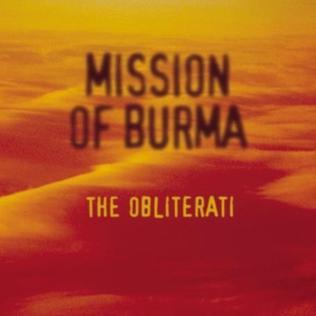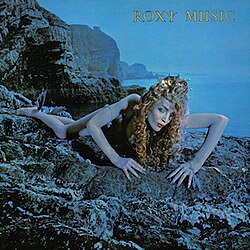We describe art that was groundbreaking and hip in the day as the “punk rock” of its time – e.g. Stravinski’s “The Rite of Spring” was the “punk rock” of 1913 – under the assumption that now it’s…well…corny. “The Rite of Spring” caused a riot when it debuted, but soundtracked Fantasia 27 years later. Disney is not “punk rock.” Hell, even the idea of “punk rock” isn’t very punk rock anymore. I mean, sure, The Ramones still have an ineffable coolness, but now consider The Sex Pistols…uh, shit’s kind’ve corny. That’s not to take away from the accomplishments of “The Rite of Spring” or “God Save the Queen,” it’s just that the tides of culture eternally grind down the cutting edge, turning yesterday’s pornography into today’s advertisements. What was once original is now banal. What was once true is now trite. What was once moving is now mawkish. God save the Queen? That bitch is dead. How corny would it be to play that song today?
Today I’m making an appeal on behalf of one of the foundational structures of one of the corniest types of music in 2024: classic rock.
Jimi Hendrix originated the giant distorted tone of hard rock, gave permission to lesser guitarists to take twenty minute solos, and was an acid-fried, mush-mouthed space case when it came to talking about anything that didn’t have six strings, but even in the Year of Our Lord 2024, he’s a dope-ass motherfucker, and I just wanted to take a moment to appreciate him.
I know, I know, appreciating Jimi Hendrix may seem like saying Michael Jordan was good at basketball. After all, Hendrix is still the reigning champion of Rolling Stone magazine’s greatest guitarists of all times list. But Rolling Stone is corny, and I hope I’m not corny yet (though that is coming soon enough). It took Netflix releasing that ten hour doc The Last Dance to remind everyone that LeBron might’ve shined longer, but Jordan shined brighter. So in the era of internet guitarists who can seemingly play anything, I just want to do my part to appreciate the magnificent talent, imagination, and still hip music of Mr. Hendrix.
It’s hard to fathom the rocket ship of Hendrix’s career. Hendrix had his coming out party at the Monterey Pop Festival (in which he famously lit his guitar on fire) in summer of 1967, became the highest-paid musician in the world by the time he headlined Woodstock in summer of 1969 (in which he famously played “The Star-Spangled Banner”), and asphyxiated on his vomit and died by the end of the summer in 1970, joining the idiotically revered but still iconic 27 Club.
During his life, he released three acclaimed studio albums and one (lesser acclaimed, but secretly more influential…more on that later) live album, pioneered the use of guitar effects that damn near everyone now has on their pedalboard (fuzz, vibrato, octave, wah-wah), created a new vocabulary for rhythm guitar (using double stops, hammer ons and pull offs), mutated blues solos to include giant bends and violent vibrato, damn near founded a new skill tree for exploring outright noise as a musical component, built his own studio (the still extant Electric Lady in NYC), and poetically embodied the death drive of the late 1960s. As a showman, he was a five tool player. He could play, he could sing, he could write, he could dress, and he could fuck. You couldn’t take your eyes off him.
He also died at the perfect time.
We might consider Hendrix’s legacy differently if he spent the rest of his life wandering the wilderness in a druggy haze (like Sly Stone), or incorporated synthesizers and sequencers to appeal to the kids (like ZZ Top), or made a late career play for relevancy after exploring jazz for two decades (like Carlos Santana). Or if he mellowed out musically while becoming more vocally racist (like Eric Clapton). (Eh, that one probably wouldn’t have happened.) In fact, considering how his last album sounded, and the work his disciples made after he died, it’s possible we were denied the world’s greatest funk guitarist. If you look at the quantity and quality of gems to be unearthed from his posthumous catalog (which has got to be among the largest in all of rock), it’s fair to say that there was still a lot of juice left in that squeeze. By the time he was 27, Jordan only had one of his six NBA Championships under his belt. I’m sure Hendrix had another masterpiece or two.
Band of Gypsys isn’t the most inventive Hendrix album (that would be Electric Ladyland), it isn’t the most lyrical (that would be Axis: Bold as Love), and it doesn’t have all the singles that you’ve heard a thousand times that still, somehow, don’t yet sound corny (that would be Are You Experienced?), in fact, it’s the worst album Hendrix released while he was alive, but it is the one that showcases the full strength of Hendrix as an improviser, and outlines a path forward for guitar rock in a post-Hendrix world.
Band of Gypsys is heralded by Miles Davis, Nile Rodgers, Vernon Reid, and Trey Anastasio. It’s one of the best funk rock records, which influenced The Temptations, the Isley Brothers, and Curtis Mayfield to focus on wah-wah guitar and groove – and make, in my opinion, the best music of their careers. And “Machine Gun,” is Hendrix’s best moment as an improviser and noisemaker, and inspired funk’s best solo, Eddie Hazel of Funkadelic’s “Maggot Brain.” It’s a flawed album that’s nonetheless become part of rock’s firmament.
It’s also pretty sloppy. If you’ve played in a funk-rock jam before, you have probably played music that sounds something like Band of Gypsys. It helps that Hendrix is playing with his bros here. While the Experience’s bassist Noel Redding and drummer Mitch Mitchell (both British) cut Hendrix’s most iconic material, I get the impression that they had a working relationship, but didn’t really care for each other. The Experience seemed like Hendrix’s dictatorship. The Gypsys, on the other hand, seemed like a party.
With Hendrix’s Army mate Billy Cox on bass, and the future California Raisin Buddy Miles on drums, the Gypsys are more loosey-goosey than the Experience, and certainly less practiced.
Cox is mostly content to drive a bassline into the ground, and Miles thrashes about on the kit (though I find his snare hits much crisper than Mitchell’s) and adds the occasional vocals, most notably on a song he would re-record as the funk standard “Them Changes.”
On the lead track “Who Knows,” the Gypsys take a single riff on a nine minute walk, break it down to just a beat until Miles adds some goofy scatting, and they build it up again. Funky, dude.
“Power to Love” could be a Cream song. Hendrix grabs onto a pentatonic riff and tries out different variations, including a very Grateful Dead-esque key jump.
“Message of Love” and “We Gotta Live Together” are more funk slop. Come for the groove, stay for the guitar.
The album’s centerpiece, of course, is “Machine Gun,” 12-minutes of jam/performance art, in which Hendrix makes his guitar sound like bombs, screaming, and, yes, a machine gun. Hendrix’s politics could be muddled, but was probably anti-killing, and it’s no surprise that this song arrived after America’s bloodiest year of the Vietnam War. Fittingly, Hendrix brutalizes his guitar in this song, during which he may have even invented the dive bomb, but it’s hell on his tuning. “Machine Gun” is worth the price of admission.
Bonus material includes a shrieking version of “Foxey Lady” and more funk slop.
Hendrix, who had developed into quite a perfectionist in the studio, did not care for Band of Gypsys, which he recorded live and to fulfill a record contract. Tellingly, he saved his best material for what would’ve been his next studio album: “Freedom,” “Izabella,” “Night Flying Bird,” “Angel,” and “Dolly Dagger.” It seems like Band of Gypsys was supposed to be a transition to the next phase of a career that would never come.
When Hendrix was 13, his mother died from a ruptured spleen brought on by alcoholism. Instead of taking them to her funeral, Hendrix’s father took Jimi and his brother out drinking to teach them how real men deal with problems. On the day of his death, Hendrix was reportedly not very happy, having business and women problems, and using drugs and drink to maintain his lifestyle. The last person to see him alive, Monika Dannemann, said he wanted to sleep for a “day and a half.” He finally went to sleep at 7:00 a.m on September 18, 1970, after downing nine of her sleeping pills. It was too many. He died at 27, like so many other hippie iconoclasts. How fucking corny.







